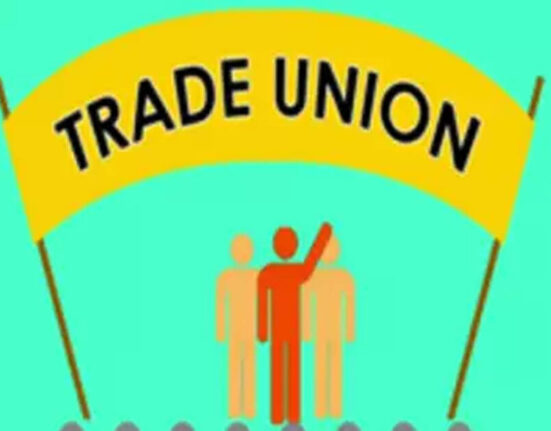This article, “WHITE COLLAR CRIMES – A DETAILED STUDY” is written by SITANSHU SHEKHAR SRIVASTAVA, a 4th-year law student at MIT WPU PUNE KOTHRUD
White Collar Crimes
White-collar crimes such as corruption, fraud, and bribery are prevalent not only in India but also worldwide. According to a report by Business Standard on November 22, 2016, the Central Bureau of Investigation (CBI) in India had identified 6,533 cases of corruption in the past decade, with 517 cases registered in the last two years alone. Among the alarming statistics was the revelation that fake or duplicate PAN cards were used for trading worth 4,000 crores. Maharashtra experienced a significant surge in online cases, with 999 cases being registered. Additionally, approximately 3.2 million people suffered losses due to card details theft from YES Bank ATMs managed by Hitachi Payment Services.
The proliferation of commerce and technology has led to a notable increase in cybercrime, a subset of white-collar crime. Cybercrimes are on the rise because the risk of detection and apprehension is relatively low. India’s position on Transparency International’s corruption perception index (CPI) has improved over the years. In 2014, India ranked 85th, which improved to 76th in 2015, partly due to measures taken to combat white-collar crimes. In 2018, according to a report by The Economic Times, India climbed to the 78th position, indicating a three-point improvement from 2017 among 180 countries.
India, as a developing nation, faces various challenges, and white-collar crimes have emerged as a significant hindrance to its progress, alongside issues like poverty and healthcare. The increasing trend of white-collar crimes poses a serious threat to India’s economic development. To address this issue effectively, the government should not only enact stringent laws but also ensure their proper enforcement through immediate intervention.
Chronological Background
The Carrier’s case, famously known as the Carrier’s case, marks one of the earliest documented instances of white-collar crime in 1473 England. In this case, an agent was entrusted with the task of transporting wool on behalf of a principal. However, the agent was found guilty of stealing some of the wool. This case led to the English Court adopting the legal concept known as the ‘breaking the bulk’ doctrine. This doctrine essentially means that if a bailee, who is entrusted with the possession of goods, tries to open and misappropriate the contents, it constitutes a breach of trust.
As industrial capitalism grew, criminal activities associated with white-collar crime became more sophisticated. Institutions of the bourgeoisie, driven by greed and, in some cases, desperation, engaged in such crimes to amass wealth and power. In 1890, the United States enacted the Sherman Antitrust Act, which made monopolistic practices illegal. While penalties for white-collar crimes in Great Britain and the adoption of competition or antitrust laws in other countries were not as comprehensive as the Sherman Act, the landscape was changing.
During the late 18th and early 19th centuries, a group of journalists played a pivotal role in stirring public sentiment and calling for reforms in response to these white-collar crimes. By 1914, the U.S. Congress had significantly strengthened the sentiments laid down by the Sherman Act. This resulted in the passage of more stringent legislation that dealt more effectively with illegal monopolistic practices when compared to the original Sherman Act.
Effects Of White Collar Crimes
Effects of white-collar crimes extend to various aspects of society, impacting companies, employees, customers, society at large, confidence in financial markets, offenders, and the emotional well-being of affected individuals.
- Impact on Companies:
White-collar crimes result in substantial financial losses for companies. To recover these losses, companies often raise the prices of their products, reducing customer demand due to the inverse relationship between price and demand. Consequently, employees may face reduced salaries or job cuts, while investors and employees struggle to repay loans and obtain credit. For instance, a US-based IT company paid a significant sum to settle charges related to bribery, incurring additional expenses.
- Effect on Employees:
Employees become apprehensive about their working conditions and whether the workplace is safe. They may lose trust in the company’s integrity.
- Impact on Customers:
Customers become concerned about the safety of the products they use due to the increasing prevalence of white-collar crimes.
- Impact on Society:
White-collar crimes tarnish the moral example and responsible behaviour expected from individuals in society, leading to societal degradation. Large-scale frauds, such as the one involving the former director of Andhra Bank and directors of Sterling Biotech, cause widespread fear.
- Loss of Confidence:
Stock fraud or trading scandals, like those in the 1980s in the US, erode public faith in financial markets. The infamous Enron scandal wiped out retirement accounts and shattered public confidence.
- Effect on Offenders:
There is no consensus on the definition of white-collar crimes, making it challenging to analyze their causes and effects. The absence of accurate statistics and underreporting hinder the government’s ability to prevent such crimes effectively. Offenders often operate behind closed doors, using computers, and evade detection, contributing to their fearless attitude. Shorter sentences compared to blue-collar crimes further incentivize offenders. They often roam freely, posing a danger to society.
- Emotional Impact on Victims:
Elderly individuals with limited access to liquid assets are common targets, leading to depression and even suicidal tendencies among victims. For instance, Vijay Shekhar Sharma, the founder of Paytm, experienced blackmail and extortion by his personal secretary, causing immense stress and pressure.
Problems in Dealings with White collar crimes
First and foremost, the challenges that affect all stages of the prosecution process. These challenges include:
- Involvement of Individuals within the System: These individuals, often distinct from conventional criminals, hold positions within the system or closely associate with groups responsible for creating and enforcing laws related to white-collar crimes. Consequently, they possess the power to manipulate or shape the system in their favor, leading to lenient laws, reduced penalties, protracted investigations, or delayed trials. Additionally, they can exert influence over victims, coercing them into refraining from filing complaints by using threats of adverse consequences.
- Instilling Fear Among All Participants: This includes not only victims but also witnesses, law enforcement agencies, and everyone engaged in the prosecution process. In cases involving white-collar crimes, the perpetrators often come from the upper echelons of society. This leads to a pervasive sense of trepidation among the general populace, discouraging them from taking any action against these individuals. This fear encompasses not only the victim when considering filing a complaint, but also extends to witnesses involved in the investigative process, the law enforcement agencies conducting the investigation, and even the court system itself. The high social status or reputation of these criminals creates an atmosphere where decision-makers are hesitant to rule against them. In some instances, this fear doesn’t stop at the victim alone; it also affects their family members. Consequently, many white-collar criminals evade punishment due to these circumstances, as the fear of retribution and the influence of their social standing create significant barriers to justice.
- Lack of Public Awareness: White-collar crimes often operate within the bounds of the law or at a level that escapes the notice of the general public. The paradoxical situation arises where the victim’s credibility is undermined, and they remain oblivious to it. This lack of awareness results in numerous cases going unreported against such offenders.
- Legislative Stalemate: White-collar crimes involve significant sums of money, and when the national economy is at stake, politics frequently become intertwined. Given the current political division, achieving consensus becomes challenging. There is a protracted debate among politicians about how to approach the prosecution of such crimes, the extent of government involvement, and the appropriate penalties. The consequence is lengthy delays in resolving these issues due to political gridlock.
- Prolonged Legal Processes: Due to the absence of stringent laws and established timelines for investigations and trials, legal battles can drag on for years when prosecuting white-collar criminals. This prolonged duration dilutes the seriousness of the offence over time.
- Limited Individual Impact: The impact of white-collar crimes is often diffused throughout the community, resulting in individual victims experiencing only marginal effects. Consequently, people tend to conveniently forget about these crimes, and their concern for the progress of trials wanes, providing an opportunity for the criminals to evade justice.
- Prevalent Corruption in the System: The prevalence of dishonesty within the Indian system is another significant factor contributing to the impunity of white-collar criminals. The system is susceptible to bribery, making it easy for criminals to manipulate outcomes in their favor. They can bribe witnesses, investigative agencies, and even prosecuting authorities, making it exceedingly challenging to hold such criminals accountable.
- Lack of Public Outrage: White-collar crimes often do not elicit the same level of public outrage as violent crimes, making it difficult to mobilize public support for tougher regulations and enforcement efforts.
- Restitution Challenges: Recovering stolen assets in white-collar crime cases can be difficult, especially if the funds have been moved offshore or hidden in complex financial instruments. Victims may not receive full restitution.
- Whistleblower Retaliation: Individuals who report white-collar crimes, especially within their own organizations, can face retaliation, making it less likely for potential witnesses to come forward.
- Changing Technology: Advances in technology have given rise to new forms of white-collar crimes, such as cybercrimes and cryptocurrency-related offences. Keeping up with evolving criminal tactics and technologies is a constant challenge for law enforcement.
- Political and Corporate Influence: High-profile white-collar criminals may have political or corporate connections that can be used to influence investigations or legal outcomes.
Summary
White-collar crimes, including corruption, fraud, and bribery, are a significant issue in India and worldwide. India has seen a rise in these crimes, with thousands of cases reported, and cybercrimes are on the increase due to lower detection risk. These crimes have a detrimental impact on companies, employees, customers, society, and the economy. However, dealing with white-collar crimes presents several challenges, including the involvement of individuals within the system, fear among participants, lack of public awareness, legislative difficulties, prolonged legal processes, and prevalent corruption. Additionally, the lack of public outrage and difficulties in asset recovery further complicate addressing these crimes. Political and corporate influence can also hinder investigations and legal outcomes. To effectively combat white-collar crimes, stringent laws and their proper enforcement are crucial, and addressing these challenges is essential for ensuring justice and deterring such offences.
Reference
https://corporatefinanceinstitute.com/resources/esg/white-collar-crime
https://www.legalserviceindia.com/legal/article-530-white-collar-crime-detail-study.html



Leave feedback about this